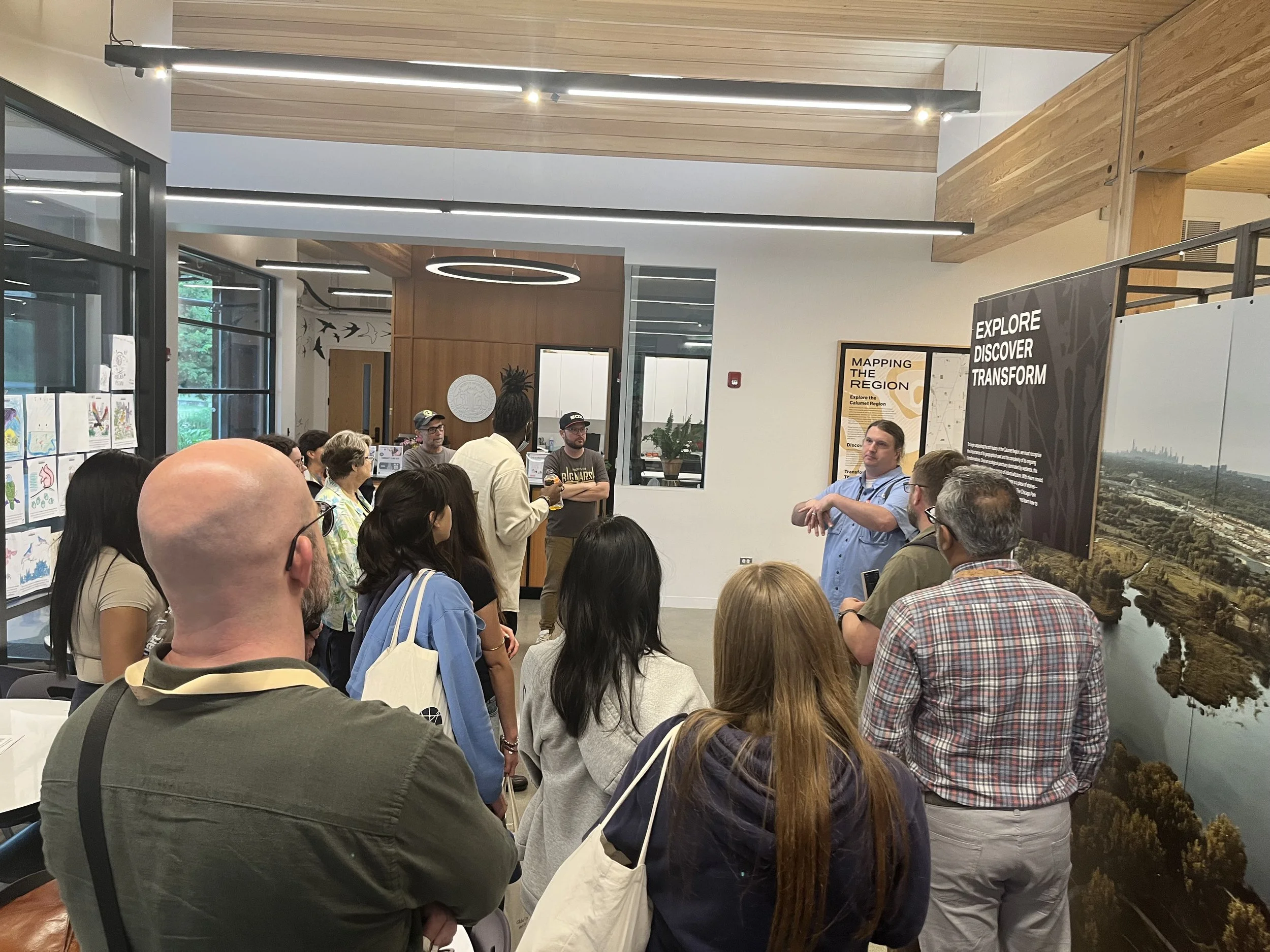Mapping a Greener Future
Indian Ridge Marsh (Photo credit: Friends of the Chicago River)
The innovative new planning tool that’s helping community leaders create a more sustainable Chicago
Building a greener Chicago has just gotten a little easier, thanks to an innovative new planning tool from the Greater Chicago Watershed Alliance. The GIS-based Natural Solutions Tool, which launched with a successful pilot project earlier this year, is a strategically layered mapping system designed to identify the most cost-efficient, impactful opportunities for green infrastructure projects, particularly around the iconic Chicago River.
Covering 176 municipalities across four counties, the tool incorporates 84 data layers all the way down to the parcel level, offering a nuanced and detailed perspective of the local landscape. Users—who may be local governments, environmental agencies, or even individuals or corporations–can explore factors such as hyperlocal climate projections, political boundaries, demographics, trails, wildlife areas, and much, much more. The resource even includes factors like nearby rates of asthma that point to a greater public health need for more sustainable land use in certain communities.
“This is not just about preserving green spaces; it's an investment in the well-being of the community,” says Margaret Frisbie, Executive Director of Friends of the Chicago River, the stewarding agency behind the Greater Chicago Watershed Alliance.
It seems others agree. In November, Friends of the Chicago River received a Climate Champion Award at the Chicago Innovation Awards for their groundbreaking work on the Natural Solutions Tool.
“The Chicago region continues to be a global leader in innovation,” said Tom Kuczmarski, co-founder of the awards. “The 2023 winners are solving unmet needs and making a difference.”
Developed over 18 months in a deeply collaborative process among the Alliance members, in partnership with The Trust for Public Land’s Climate-Smart Cities program–and with funding support from Walder Foundation–the Natural Solutions Tool officially launched in the spring of 2023. As a first test of its power, the Alliance joined forces with the Chicago Park District to revitalize a neglected marsh area on the city’s southeast side. Armed with layers upon layers of data, the project team focused on restoring a local wetland habitat to make it more hospitable for wildlife and plants–as well as for area community members, with the creation of more accessible natural spaces and trails.
“One of the great things about this project is that it’s now this beautiful natural space nestled in an incredibly industrial area,” said Frisbie. “The contrast really helps people imagine that yes, you can have nature where you also have cities.”
Indeed, the Natural Solutions Tool was inspired by similar tools created via The Trust for Public Land’s Climate-Smart Cities program in 14 other U.S. metro areas, including Los Angeles, Boston, and Camden, NJ.
Clients in the past, however, have always been a city, not a collaboration of local organizations and agencies, as with the Chicago project. “The scope of our project was monumentally larger,” said Frisbie. “We also layered in biodiversity much more because that was very much part of our collective desire.”
With 20 members as part of the Alliance–which includes government agencies like the Chicago Metropolitan Agency for Planning, the Metropolitan Mayors Caucus, and the Metropolitan Water Reclamation District, as well as nonprofits like The Nature Conservancy, Openlands, and even The University of Illinois–the creation of the Natural Solutions Tool is truly a testament to the power of collaboration and strategic environmental planning. Beyond just working together to map and plan, the tool has also laid the groundwork for organizations to collaborate on future initiatives and partner projects that all share the common goal of steering Chicago toward a greener future.
“The Natural Solutions Tool is a valuable environmental information resource for driving community projects through data. Uniquely designed for a wide variety of users, the Tool helps to uncover equitable opportunities to achieve public health, environmental, social and economic benefits, said Raed Mansour, Director of Environmental Innovation at the Chicago Department of Public Health.
In just a few months, more than 400 individuals, from public health officials to community groups, have been trained to use the tool. And efforts are already underway to continue increasing the biodiversity layers and enhance the tool’s capacity to address complex environmental challenges.
“The more we can work together to harness this tool, the better,” said Frisbie. “It's not just about mapping; it's about empowering individuals and organizations to make informed decisions, together, for the betterment of our communities.”
Get more stories like this delivered to your inbox.
Sign up with your email address to receive news and updates.










